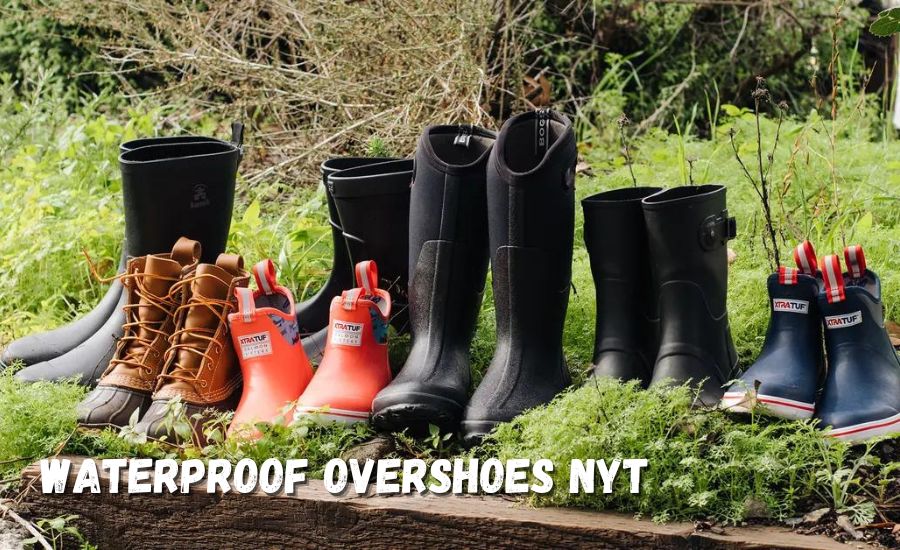Crossword puzzles are more than just a pastime for many; they are a way to engage the mind, learn new words, and enjoy the nuances of language. The New York Times Crossword, in particular, holds a prestigious place in the world of word games, known for its clever clues, challenging grids, and the occasional introduction of lesser-known terms. One such term that recently made its debut is “ARCTICS,” which appeared as the answer to the clue “Waterproof overshoes.” This article delves into the significance of this term, its place in the crossword lexicon, and the broader cultural context of crossword puzzles.
The Intrigue of “ARCTICS” in Crossword Culture
When the term “ARCTICS” appeared in the New York Times Crossword, it sparked curiosity among solvers. This word, though a legitimate term for rubberized boot coverings, is not commonly used in everyday language. Its inclusion in the crossword puzzle is a testament to the puzzle creators’ ability to weave in obscure or rarely used words, challenging solvers to think beyond the usual vocabulary.
The clue “Waterproof overshoes” might seem straightforward at first glance, but it required solvers to dig deep into their word knowledge to recall or recognize the term “ARCTICS.” These overshoes, designed to protect regular shoes from harsh weather conditions, particularly in snowy or rainy environments, have a long history. However, their mention in modern conversations is rare, making their appearance in the crossword a unique and educational moment for many.
The Significance of Crossword Clues and Answers
Crossword clues like “Waterproof overshoes” are not just about finding the correct answer; they are about the journey of solving. The New York Times Crossword is known for its clever wordplay, where clues can be deceivingly simple or intentionally tricky. The clue “Waterproof overshoes” could have led solvers to think of more common terms like “galoshes” or “rubbers,” but the correct answer, “ARCTICS,” reflects a deeper level of knowledge and understanding.
The clue also highlights the importance of context in crossword puzzles. Without the cultural or historical context of the word “ARCTICS,” many solvers might find themselves stumped. This is where the beauty of crossword puzzles lies— they are not just tests of vocabulary, but also of one’s knowledge of history, culture, and language nuances.
Exploring the Word “ARCTICS”
The term “ARCTICS” refers to a specific type of waterproof overshoes that are typically rubberized and designed to cover regular shoes or boots. These overshoes are particularly useful in cold, wet climates, where they provide an additional layer of protection against the elements. The word itself is somewhat archaic, having fallen out of common usage in favor of more modern terms like “rain boots” or “snow boots.”
The inclusion of “ARCTICS” in the NYT Crossword can be seen as a nod to the puzzle’s rich history of incorporating older, less commonly used terms. Crossword puzzles, especially those in reputable publications like the New York Times, often serve as repositories of language, preserving words that might otherwise fade into obscurity. In this way, “ARCTICS” represents more than just a practical item; it embodies a piece of linguistic history, reminding us of the evolving nature of language.
The Evolution of Footwear Terminology

The term “ARCTICS” brings to mind the evolution of footwear and the changing language used to describe it. In the 19th and early 20th centuries, overshoes like “ARCTICS” were essential for those living in colder climates. Made from rubber or similar materials, these overshoes were worn over regular shoes to keep feet dry and warm in snow and rain.
Over time, the design and terminology of waterproof footwear have evolved. Today, we have a wide variety of options, from sleek rain boots to insulated snow boots, each with its own specific purpose and name. However, the term “ARCTICS” harks back to a time when language was more descriptive of the function rather than the style of footwear. This historical context adds depth to the crossword clue, making it not just a word to solve, but a window into the past.
Crossword Puzzles as Cultural Artifacts
Crossword puzzles like the one in the New York Times are more than just games; they are cultural artifacts that reflect the language, trends, and knowledge of the time. The inclusion of a word like “ARCTICS” in a modern crossword puzzle connects us to the past, reminding us of the ways in which language and culture are intertwined.
Each crossword puzzle is a snapshot of the moment in which it was created, capturing the interests, concerns, and linguistic quirks of the time. By solving these puzzles, we engage with a form of cultural preservation, learning not only new words but also about the history and context behind them. The word “ARCTICS,” while seemingly just a functional term for waterproof overshoes, is part of this larger tapestry of language and culture.
The Challenge of Obscure Words in Crosswords

One of the appeals of crossword puzzles is the challenge they present, particularly when they include obscure or archaic words like “ARCTICS.” These words test the solver’s knowledge and ability to make connections between seemingly unrelated clues. For seasoned solvers, the appearance of such words is a welcome challenge, an opportunity to demonstrate their linguistic prowess.
However, for newer solvers, encountering a word like “ARCTICS” can be daunting. This is where the educational aspect of crosswords comes into play. By including difficult or less common words, crossword puzzles encourage solvers to expand their vocabulary and deepen their understanding of language. In this way, crosswords serve as both a mental exercise and a learning tool, pushing solvers to improve with each puzzle.
The Role of Crosswords in Language Preservation
The New York Times Crossword, along with other reputable crosswords, plays an important role in preserving language. By incorporating words like “ARCTICS” into their puzzles, they ensure that these terms remain in use, even if only within the context of the puzzle. This preservation is crucial for maintaining a rich and diverse vocabulary, keeping alive words that might otherwise fall out of common usage.
Language is constantly evolving, with new words being coined and old ones fading away. Crossword puzzles act as a counterbalance to this natural progression, holding onto words that have historical or cultural significance. In this way, crosswords contribute to the ongoing story of language, documenting its changes while preserving its history.
The Impact of Crossword Puzzles on Popular Culture
Crossword puzzles have had a significant impact on popular culture, influencing everything from television shows to daily conversations. Shows like “Jeopardy!” often feature crossword-style clues, and crossword puzzles have been referenced in countless movies, books, and other media. The New York Times Crossword, in particular, has become a cultural icon, known for its challenging puzzles and clever wordplay.
The inclusion of words like “ARCTICS” in these puzzles adds to their cultural significance. When a word appears in the New York Times Crossword, it gains a certain level of recognition, becoming part of the shared vocabulary of solvers around the world. In this way, Waterproof Overshoes crossword puzzles help shape and influence the way we use and think about language.
Conclusion
The term “ARCTICS,” as seen in the New York Times Crossword, is more than just an answer to a clue; it is a symbol of the rich history and cultural significance of crossword puzzles. This word, though obscure and rarely used in modern language, represents the power of crosswords to preserve language, challenge solvers, and connect us to the past.
As crossword puzzles continue to evolve, incorporating new words and ideas, they will undoubtedly continue to play an important role in our culture. Words like “ARCTICS” remind us that language is a living, breathing entity, constantly changing but always rooted in its history. By solving crossword puzzles, we participate in this ongoing evolution, learning, preserving, and celebrating the beauty of words.
Whether you are a seasoned crossword solver or a newcomer to the world of word puzzles, the inclusion of “ARCTICS” in the New York Times Crossword is a reminder of the depth and richness of the language we use every day. It challenges us to think more deeply, learn more broadly, and appreciate the intricate tapestry of words that make up our world.
Stay informed with the latest news and updates on: Dallas Insiders
